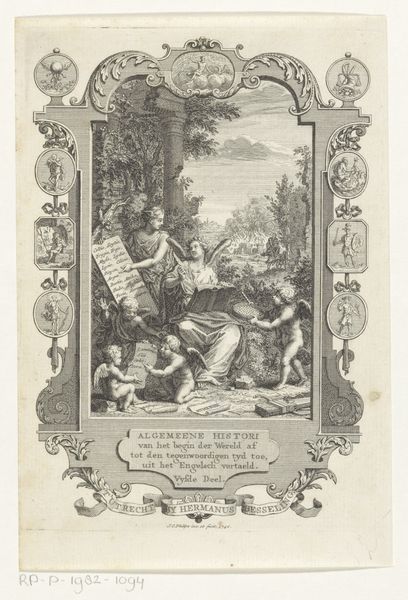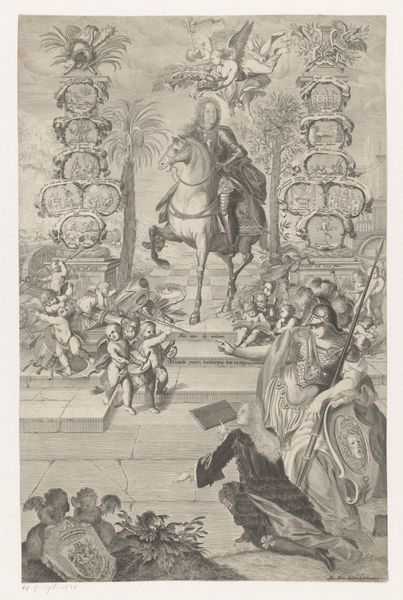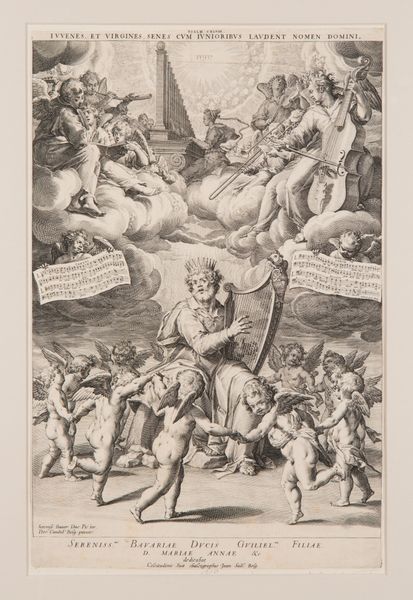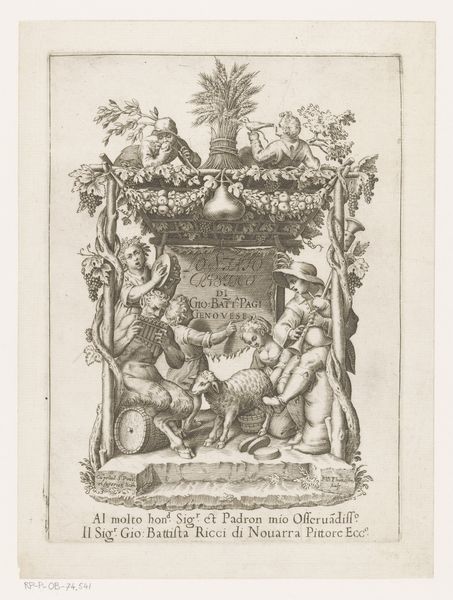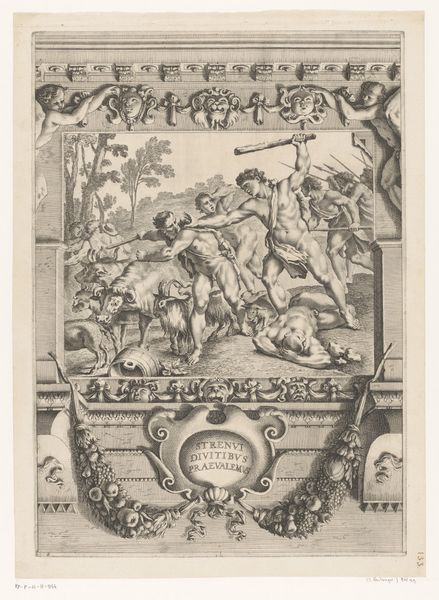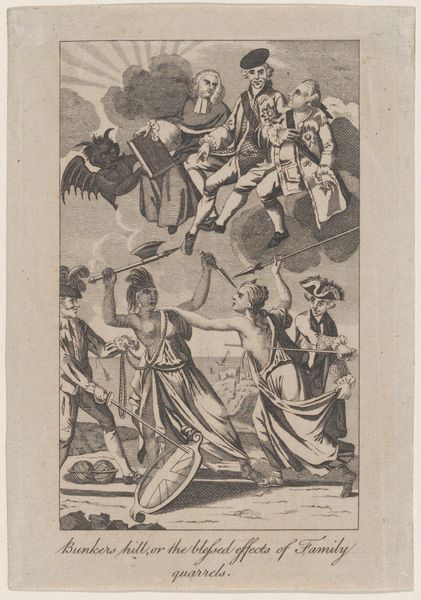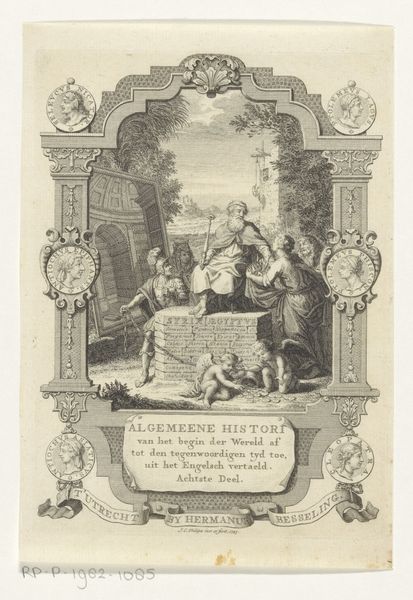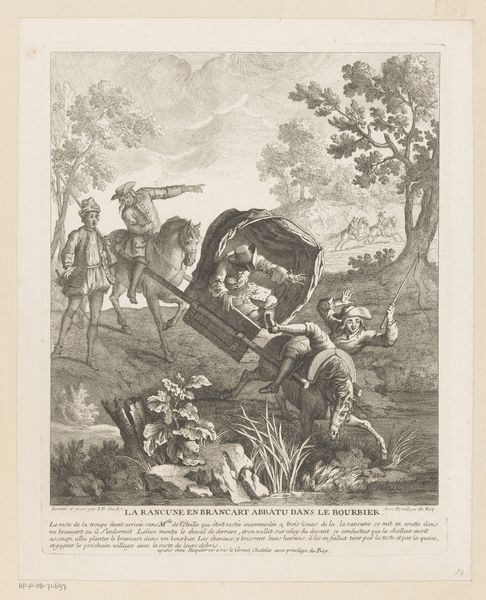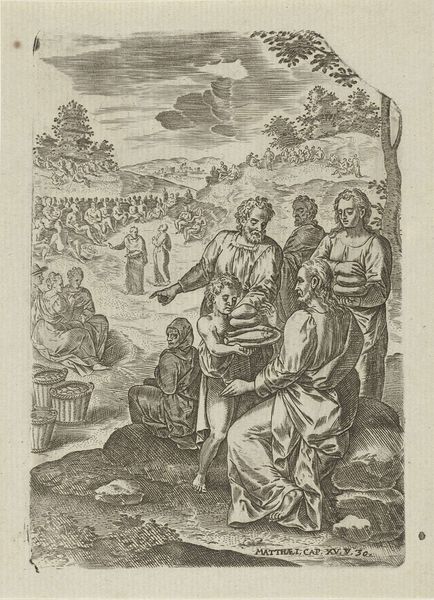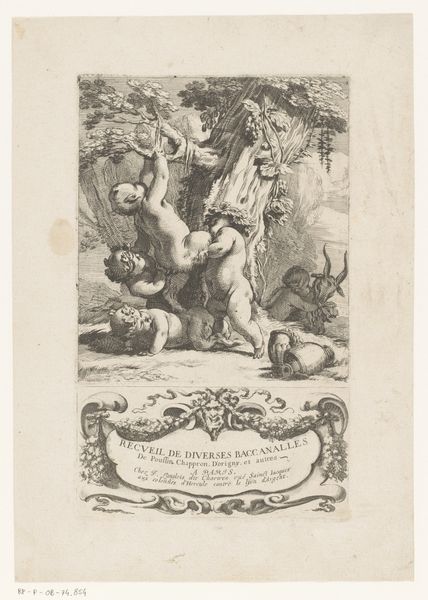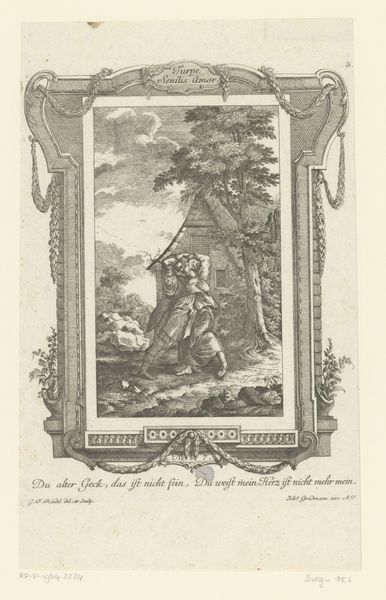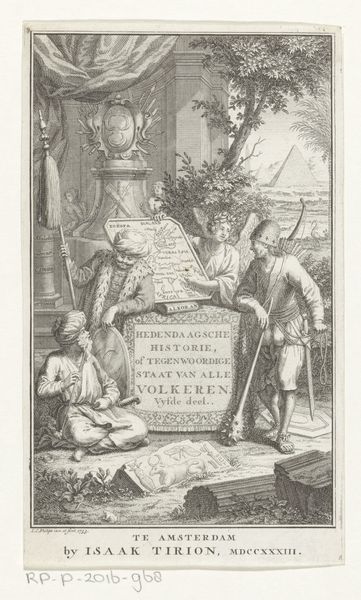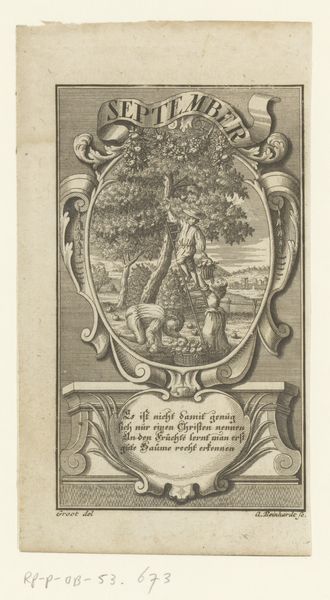
Allegorische voorstelling met Oost Europese mannen en riviergod Wisla 1734
0:00
0:00
print, engraving
#
allegory
#
baroque
# print
#
old engraving style
#
landscape
#
figuration
#
form
#
line
#
history-painting
#
engraving
Dimensions: height 171 mm, width 102 mm
Copyright: Rijks Museum: Open Domain
Curator: Ah, this engraving… I see so much swirling here. Jan Caspar Philips really packs it in. It's dense, you know? It's like stepping into someone’s imagination uninvited. All those figures vying for space! Editor: You've said it. The initial impression is overwhelming, an accumulation of details demanding a structured analysis. It’s formally an Allegorical Representation with Eastern European Men and the River God Wisla, made around 1734. Look at how the composition funnels your eye: the landscape fades subtly in the background to keep all of our attention here, at the foreground. Curator: River gods! Old maps! It's all a bit grandiose. Do you think the river even asked to be represented so…stately? All those putti, are they essential? Though I do feel it communicates some strong vision, like they meant every last mark and inclusion to mean something. Editor: Well, that's the Baroque for you. Each element contributes to a deliberate symbolic language. The figures, costumes, objects—each possesses inherent semiotic weight. Philips deploys line work masterfully to achieve depth and texture. It builds the grandeur, but also invites a very intimate reading experience. Curator: Exactly, intimate! It makes me think: who did they intend to wow with it? Who stood close enough to unravel these stories layered in? This image feels more immediate somehow than most things you see from its time—it almost has a sense of humor, if you allow for some wryness from the Wisla… Editor: A potential market may have been other cartographers, wealthy merchants, academics who studied trade, the movement of people. The text included refers to 'contemporary history,’ so perhaps there was also journalistic intent here. The book vendor or editor, Tirion, most probably played a role in the messaging this imagery supported. Curator: Interesting point, indeed! It's almost as if the image acts as a historical document masked as high art. That merging makes you look a little deeper, think a little harder, and—yes—wonder what stories Wisla could tell about how she was visualized centuries later! Editor: I agree. It certainly goes beyond a simple depiction of geography. The complex interweaving of symbolism and social commentary certainly leaves us with something to contemplate, long after we’ve moved on.
Comments
No comments
Be the first to comment and join the conversation on the ultimate creative platform.
